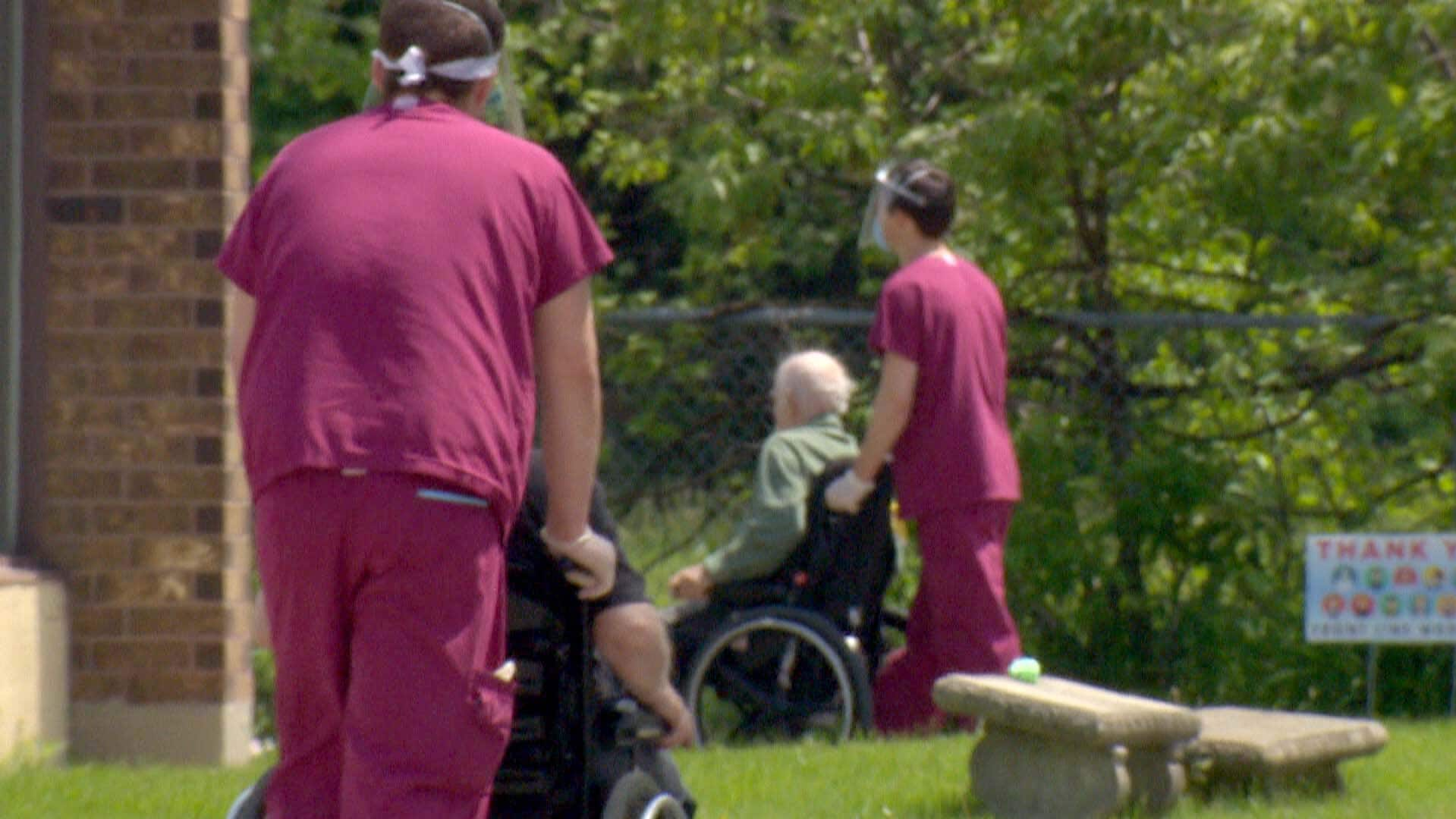Ontario may not hit LTC care target due to staff shortages
Difficulties hiring and retaining enough nurses and personal support workers for long-term care homes could mean the Ontario government may not meet its target for the amount of hands-on care residents receive, the minister responsible for the sector was warned.
There is a “systemic shortage of nurses” across all sectors, according to a briefing document prepared for Long-Term Care Minister Stan Cho when he took over the file in September.
As of this year, there is a need for 13,200 additional nurses and 37,700 PSWs in Ontario, said the document, obtained by The Canadian Press through a freedom-of-information request.
Shortages in long-term care will become more acute amid the government’s push to vastly increase the number of homes and as it tries to boost the amount of direct care residents receive, the document said.
“Anticipated growth in LTC services i.e. the increases to the system average daily direct care time and 30,000 new beds will create a need for thousands more of new positions for nurses and personal support workers (as well as other LTC personnel) over the next decade,” the briefing said.
“This is over and above existing shortages.”
The Progressive Conservative government set a goal in 2021 of having long-term care residents receive on average four hours of direct care from nurses and PSWs per day by 2025, up from less than three hours in 2018. It put that target in legislation.
The government met its first and second interim targets, documents show, with residents receiving an average of three hours and 15 minutes of hands-on care as of March 31, 2023.
Cho’s office was not yet able to say if the March 31, 2024 target of three hours and 42 minutes was met, but briefings he received after taking over the file in September paint a tough picture.
“Ongoing staffing challenges (e.g supply shortages, cross sector competition, etc.) as well as continued pandemic impact and higher occupancy … present risks to the achievement of targets,” the document said.
Unmanageable workloads for staff, union says
The warning comes as no surprise to many in long-term care, including the president of SEIU Healthcare, the largest union representing long-term care workers.
“Every time the government announces that they’re going to have all these thousands of new beds, we’re sitting on the sidelines, saying, ‘Who’s going to staff those homes?”‘ Sharleen Stewart said.
Shortages are affecting care, Stewart said, as staff such as personal support workers take on increasingly unmanageable workloads — caring for more residents at a time than they should and completing tasks that should be done in pairs by themselves — and then burn out.
“Some of them, they don’t last six weeks,” she said.
“A lot of them go in and say the workloads are just too heavy, the conditions are unsafe, and they move on. So we’ve had reported close to 50 per cent of new hires leave within the first between six months and definitely after a year. So it’s a continuous revolving door.”
A spokesperson for Cho said the government works with the long-term care sector to ensure funding goes toward quality care for residents, but acknowledged the staffing situation is difficult.
“Our government acknowledges the current pressures facing Canada, such as inflation and the global health and human resource shortage, which are impacting our ability to continue to make progress on our ambitious targets,” Daniel Strauss wrote in a statement.
“This is why our government is continuing to make historic investments in Ontario’s long-term care sector.”
Ontario has been promising to fix long-term care, but a CBC News investigation has found many of the promised accountability measures are falling short. The province is also approving and funding expansions for the companies responsible for the highest pandemic death rates in long-term care.
The government is funding various programs to address the issues, including a $3 per hour wage enhancement for PSWs in long-term care, stipends during clinical placements, $10,000 to recent PSW graduates in exchange for a 12-month commitment to work in a long-term care home, and more if it is in a rural or northern area.
Still, Cho’s transition binder said, PSW attrition is as high as 25 per cent, meaning up to a quarter of the profession leaves annually. Low wages and working conditions are cited as key issues.
Wage disparity among nurses
Lisa Levin, CEO of AdvantAge Ontario, representing non-profit homes, said that after the government enacted the wage enhancement during the COVID-19 pandemic for PSWs, it left registered practical nurses, who oversee PSWs, earning the same or less.
“What we’ve been saying to government is we appreciate the efforts that they’ve made, which is a fair bit, to provide funding and put in place health human resource programs, but it needs to be done comprehensively, and not on a piecemeal basis because otherwise, you’ll get situations like the RPN wage compression, where you might improve things for one group, but make it worse for another group,” she said.
There is also wage disparity among nurses across different parts of the health-care system, said Erin Ariss, president of the Ontario Nurses’ Association. The union is heading into bargaining on behalf of 3,000 members at for-profit homes and wants to see staffing ratios to improve resident care and wages equal with nursing counterparts in hospitals.
“These nurses who work in long-term care have the same grocery bills, the same gas bills, the same mortgage rates as the rest of Canadians … and their wages have not really moved in any meaningful way in almost a decade,” she said.
“Compounding that is the fact that they are caring for, in some cases, hundreds of residents to one nurse.”
Donna Duncan, CEO of the Ontario Long-Term Care Association, said that staffing shortages in health care are a global problem, and the province has done a lot of work on the issue though there is still more to be done.
“We’re starting to see these initiatives start to bear fruit,” she said.
“It’s getting much easier to recruit PSWs … We still continue to have challenges on nurses and RPNs, probably more on RPNs than actually RNs right now.”
In 2022-23, long-term care homes spent about $418 million on outside agency nurses to temporarily fill vacancies, an increase of 46 per cent over the previous year. Homes spent hundreds of millions more on hiring PSW agency workers, government documents suggest.
Other “allied health professional” staff who work in long-term care homes such as physiotherapists, dietitians and recreational staff are also in short supply, said Levin and Stewart, though the briefing document shows the government has met its target of 36 minutes per resident of daily direct care from those professionals.
View original article here Source










